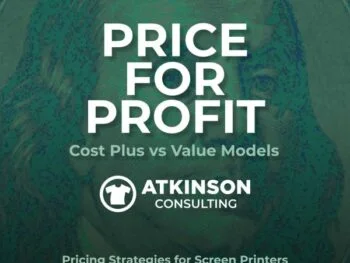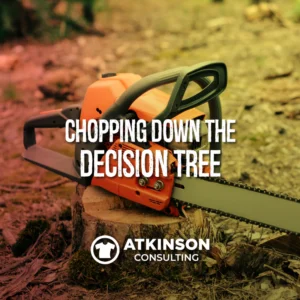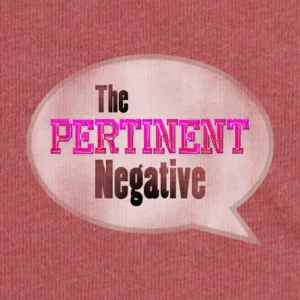It’s a brand new year! Woohoo!
If you are like me, it’s an opportunity to see the future as a new slate. A new chance. Energy level surge, 123%.
Until about the second week of February kicks in. Then, will you go back to old habits and start taking the same shortcuts from last year?
Oh geez.
While everyone is focused on taking advantage of “the beginning of the year” mindset, I thought it might be fun to take a look at some often overlooked things in your business that you might consider shifting.
Kick Two Problems To the Curb
First up, is a chance to remove two problems from your business. Maybe you have them, maybe you don’t.
What are these problems?
Problem customers and problem employees.
If we are going to start fresh, let’s begin by dumping these headaches and reaching out for better. First, let’s define these problems a little bit.
A problem customer is one that just simply isn’t profitable, or doesn’t align with who you want to be working with on a constant basis. They aren’t a good fit. If you find yourself avoiding their phone calls or wishing they would go away, you know who I am talking about here.
A problem employee is one that you wish you never hired in the first place. Your management and HR team spends a lot of effort and time dealing with their shenanigans. You didn’t have the heart to terminate them before the holidays. Well, the holidays are over.
Take some time and on both (or either) of these challenges and ponder what life might be like in your business if you simply didn’t have to stress over these issues. What would the atmosphere be like if you replaced them with better customers or better employees?
Is it a vision of breathtaking clarity? Awesomeness?
Or at least a way to avoid a blood pressure spike.
Do your company a huge favor and plan your next step, which is to let them go. For the customer, this can be achieved by a new price increase (which they won’t accept) or changing the terms on how you work with them (which they will have a problem with too). With your problem employee, get your facts together, and plan out how you are going to replace them.
Then pull the trigger.
Think Processes
Usually, when something isn’t working right in a shop, you can trace the problem back to a lack of clarity regarding what the “right way” should be in the action.
Is there a defined process for how something should be handled?
For example, I was reading online in a Facebook group the other day about how a shop was having trouble with customers reporting that they didn’t receive all of their shirts for an order a few days after they picked them up. The shop stated that they knew that they did it right and wanted to know how to handle the customers.
Instead, think about how you can prepare the customer for the expectation of what should happen when the order begins.
This starts with your customer onboarding process.
Are you giving them a branded sheet that lists how you operate? What are the rules?
In this document, you can state how you count the garments three times for every order. When the goods are received, at the machines right before production, and at the end of production when they are boxed up. On the packing slip, you could stamp “COUNTED BY” and have the final person who touched the order sign and date it in red ink.
As part of that process, for any customer pick up orders, they are given the opportunity to count their order before they leave with the items. They sign that and either accept your count or take responsibility for the quantity by counting the shirts before they leave.
This is just one process.
Take a minute a list your top ten problems that you struggle with constantly.
Have you defined those processes from beginning to end? What would you need for clarity in those situations? What’s lacking?
Strengthen your processes and then work on educating everyone on them.
More Positive Feedback
This year I want you to start noticing the good things that happen in your business.
As leaders, it’s natural to always be on the hunt for the problems. We want to change those to improve them. In doing so, we are constantly pointing out negative things to people.
I guarantee you more good things happen in your business than bad. But, those good things don’t get talked about much.
What if you spent more time noticing all the little things that happen that are good, and then verbalized positive appreciation to the people doing them? Can you imagine the morale boost and jumpstart to the positive energy atmosphere for your shop?
This also works hand in hand with my two favorite words to say to someone.
Thank You.
Try it. Don’t wait for perfection to happen before you say something nice to someone. The time is now to notice the positive things around you and acknowledge them.
Go For The 1%
Because it’s a new year, we all are thinking about how we can achieve massive change.
But the problem is that massive change is hard. It requires massive effort. Massive thinking. Massive cooperation.
It’s just too much.
After a short period of time, and a few misses, people go back to whatever rut they were in and that massive change effort fails. Frankly, it was doomed from the start.
Instead, what if you concentrated your effort for 1% change, but tried to hit that daily?
Your new habit is to try for a constant series of small wins. Tiny. Just a little more effort. A few minutes. One more phone call. Some planning for tomorrow or next week. Reading a book for 30-minutes a day.
What could you do with a little more effort?
Imagine what might be accomplished if every single person in your company added 1% more effort daily?
Now think about what that might look like this same time next year.
Imagine the accomplishment your business might achieve if you stack all of those 1% small victories on top of each other?
Listen Better
Most people suck at listening. People don’t listen to comprehend, they listen to reply.
In a conversation, what if you stopped worrying about your end of the conversation and concentrated more on what the other person is actually trying to communicate to you?
Not just in words. Listen to their tone of voice. Look at their body language. What is their true intent?
Listening isn’t a competition. It’s not a race. We don’t need one-upmanship.
People want to be heard and understood. It doesn’t do you any favors to “think you know” what’s being said and go out and solve the wrong problem.
I’ve struggled with being a good active listener my entire life. Full disclosure here. I’m always working on improving this skill.
Are you?
Next time you are in a conversation with someone, try shutting off your brain that wants to reply. It’s incredibly difficult. With my own conversations, I often can’t wait for the other persons to pause so I can inject my thoughts into the chat.
But that’s not how listening works.
One good trick is to take notes. It’s hard to think ahead while you are writing down what someone is saying. Plus, as an added bonus, when you can repeat back to the other person what was said with comprehension, they know you were listening. I’ve found that simply writing a word or two down on a notepad or an index card while the other person is speaking helps me focus on what they are saying versus what my reply might be.
Try it. Remember: “You must be present to win.”
Market Your Company Differently
Here’s something that I think you should know. Most potential or current customers mistrust all advertising. Nobody wants to be sold.
And, to make matters worse, people are tired of “interruption marketing”.
This is when that marketing piece lands in someone’s lap while they were doing something else. These are the television or radio commercials, direct mail pieces in the mailbox, or Facebook ads in the feed.
You know. The crap that you continually skip over or throw into the recycling bin as soon as it is delivered. For online email blasts, you can’t hit “unsubscribe” fast enough.
Instead, I want you to consider and think about how you can use technology to enhance your customer’s experience.
Take the long view. Provide content that will have your current or potential customers seeking it out to absorb. Build experiences that invite people in.
Your audience’s attention needs to be earned. Do something different. Be unique. Personalize your message and story so that it aligns and resonates with the group you are trying to appeal to in the first place.
Tell more stories. Show more success.
Welcome More Problems
As Henri Kaiser once said, “A problem is nothing more than an opportunity in work clothes.”
What type of challenges are you facing right now as you grow your business? Labor issues? Increased competition? Worry about the national economy? Technology has passed you by?
Square up and face these problems head-on as opportunities for growth and change. Start by asking questions and narrowing the challenge.
You can do this by reframing the parameters of the challenge and reducing the area where problem-solving takes place.
Carve away at the challenge. Ask “why?” a few times.
See if you can determine in what ways you might do something differently. Challenge the assumption of how things are being accomplished now.
How else can you do something? What do you need to be successful? Who can help?
What if you reversed the idea?
For example, before Henry Ford revamped how automobiles were constructed, the conventional thinking was to throw people at the work to accomplish the goal. He changed that by bringing the work to specialized and trained people and the assembly line was born.
Change your perception of how you view the challenge. Are there new patterns or solutions open to you? What would be a possible outcome if you challenged the assumptions on how something happens?
These are the opportunities before you. Make something of them.
Change Your Attitude
I’m sure you have heard the quote, “Your attitude determines your altitude.” Zig Ziglar coined that phrase many years ago, and it still holds true today.
When was the last time you had an attitude check?
Are you all doom and gloom, or are you a positive thinker?
We are beginning a new year, so mentally now is a good time to take a step back and reflect on just what tools you are bringing to the table. Your attitude is a key element in constructing a kick-ass year.
Dedicate yourself to improve the way you think.
When facing a problem, don’t get jammed up with why you can’t do something. Why it’s going to be a failure. What might happen if lightning strikes or if it rains on your parade?
Instead, list all the things you need to accomplish your goal. Think, “How you can”, instead of “Why you can’t.”
Acquire information. Ask for help. Make a plan. Set benchmarks and goals.
A positive mindset combined with complete preparation will determine the outcome you seek.
Good vs Bad Work
Lastly, one situation that I want you to focus on this year is knowing the difference between Good vs Bad Work.
Good Work is profitable. Bad Work is not.
It is as simple as that.
But for a lot of the shop owners that I speak with, their companies spend a lot of time and resources trying to handle Bad Work on a constant basis. Some shops don’t even know how to price or find out if the work is profitable to start.
In your shop right now your biggest enemy is time. There is only so much of it.
You sell your butt off trying to fill up the production schedule with work. And when that calendar fills up, the only thing left to do is to either start contracting jobs out, work overtime, or begin turning away work.
Sound familiar?
But have you ever actually dug into the types of jobs you are taking on? What is coming in the door daily? For your shop, how are your marketing efforts tied to the types of jobs that you are getting?
Take a different approach. You don’t have to say “Yes” to everything.
Run the math. What does it cost you to do the work? Compare to what you are charging. Are all the jobs on your current schedule as profitable as they need to be?
Why are you still accepting non-profitable loser-type work?
Still not convinced?
Do your company a favor and run an 80/20 research project on your customers. What you will find is that the top 20% of your customer base provides you with 80% of your income stream. What’s left? The bottom 80% of your customers only provide you with about 20% of your money.
That’s a lot of work you are doing on a constant basis that is not helping to achieve your financial goals. Seemingly every business owner that I’ve spoken to recently that wants to grow their business talks about getting “to the next level”.
Want different results? You should start by doing something different. The same approach that brought you to your current level will not get you to the next one.
Refine your sales process by using your customer data and go after more of the top 20% of your customer types, and less from the bottom 80%.
This means clarifying Good Work vs Bad Work. For your company what does that mean? Once you have detailed this out, it’s much easier to build your sales path that will help you in the next round of your journey.
You can do it!
“Between two evils, I always pick the one I’ve never tried before.” – Mae West
“I always wanted to be somebody, but now I realize I should have been more specific.” – Lily Tomlin
“One picture is worth 1,000 denials.” – Ronald Reagan





